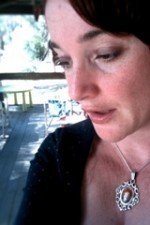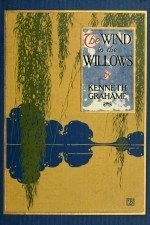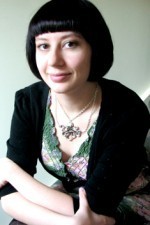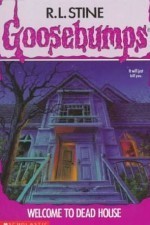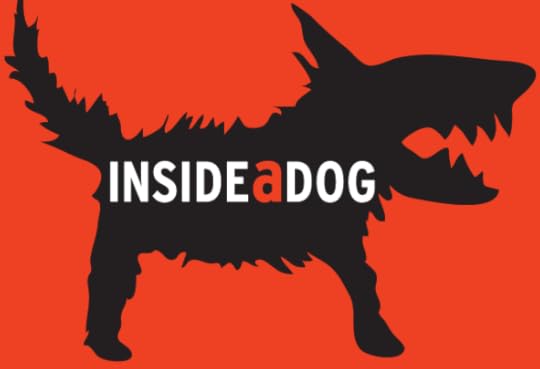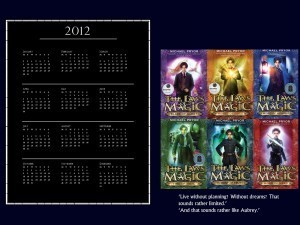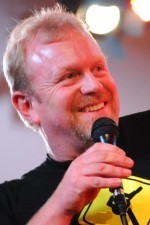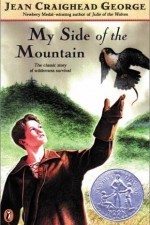Michael Pryor's Blog, page 25
December 30, 2011
2011 Round-up
As is customary, here's my round-up of professional whatnots in 2011:
two books published – Hour of Need in May (the last book of 'The Laws of Magic') and The Extinction Gambit in December (the first book of 'The Extraordinaires')
wrote two books ('The Extinction Gambit' and a top secret project which is to be published in April next year)
three short stories published
visited twenty schools for author talks, including two schools in Hong Kong
appeared at the Sydney Writers Festival, Somerset Literary Festival, Woodend Literary Festival and the Write Around the Murray Festival
started a blog
planned and researched for the continuation of 'The Extraordinaires'.
I'm sure I've forgotten things, but I think that sums it up. Happy New Year to you all!
December 21, 2011
Writers Write: My Favourite Book 8
Today's Guest Blogger is Penni Russon, one of this country's most admired writers for young people, with works as varied as the lyrical 'Undine' trilogy and Girlfriend Fiction.
I have just excised a 300-word introduction listing all the books I won't be talking about – for to choose one favourite is to neglect several cherished friends from childhood. However, the novel I am actually going to write about is The Wind in the Willows by Kenneth Graeme. As an adult I can raise all sorts of ideological issues with this book, probably the main one being the almost complete absence of female characters (apart from a laundress who furnishes a cross-dressing Toad with his getaway gear). This is a motherless world; it is a narrative of masculine encounters. These are English gentleman loafing about the countryside dressed up as toads and badgers and moles and water-rats and otters, with the lower classes lurking in the wild woods: weasels and rabbits and stoats.
It is strange then that this motherless world was one I discovered with my mother. When I was perhaps eight, Mum and I read this book together. We would read it in her bed in the evenings or during the day (Mum, prone to depression, often took herself off to bed during the day). Mum read mostly but I would take my turn too. Her bed was an island, the landscape was the big rumpling doona spread over us.
My favourite chapter was Dolce Domum, where Mole, journeying back to the river with his friend Rat, suddenly smells out his own forgotten, abandoned home. He sniffs it out urgently, Rat following, but when Mole finds it, he is bitterly disappointed, ashamed of its shabbiness. However, what Mole sees as a barren hole, Rat – ever the gentleman – gently recasts as cosy and welcoming. Carollers come to call and Rat sends one of them out with money and instructions to bring in Christmas victuals. The feeling of Christmas – peace on earth, goodwill to all men (no need to be non-gender specific here!) – permeates this chapter like the warm glow of light in Mole's abandoned hole.
My mother's favourite chapter was The Piper at the Gates of Dawn, a chapter I don't think I really understood until I was grown. Rat and Mole looking for Otter's lost son Portly (the implication is that he has probably drowned) have a sublime spiritual encounter with Pan, who then disappears from the grove. They blink, confused. Something has happened, but what? Already they are forgetting. In Pan's place they discover a sleeping Portly. Later as the river rocks them, they try desperately to cling to the memory of the encounter but the music and the words leave them and all is truly forgotten.
I think now my favourite part – certainly the scene in the novel I remember best – is the scene where an old Sea-rat tries to lure Ratty to join him in a wandering life:
'And you, you will come too, young brother; for the days pass, and never return, and the South still waits for you… You can easily overtake me on the road, for you are young, and I am ageing and go softly. I will linger, and look back; and at last I will surely see you coming, eager and light-hearted, with all the South in your face!'
Mole comes to Rat's assistance here – he prescribes writing poetry as a cure for Rat's restless melancholy longing 'even if it's only just the rhymes.' Perhaps the mother is the poetic, semiotic river: 'this sleek, sinuous full-bodied creature' who runs, trickles, dances and chuckles through the novel, gleaming with light, making a home of her body.
Or perhaps the compensation for the missing mother in Graeme's world was the body of my own mother, and the storyworld we inhabited, the world of Bed and Doona.
Penni's most recent novel is 'Only Ever Always', 2011, Allen & Unwin. For more, visit Penni's blog: www.eglantinescake.blogspot.com
December 14, 2011
Writers Write: My Favourite Book 7
The first time I saw a Goosebumps book, I fell in love.
I was eight, and the fact that the title was written in blood-like lettering and contained the words 'Dead House' meant that it was instantly the coolest thing I had ever laid eyes on. And once I'd managed to get past the hypnotic front cover, I found the story was even better – haunted houses, monsters, and everything that was scary-but-not-too-scary-for-an-eight-year-old. I was in horror heaven.
I quickly devoured every Goosebumps book I could get my hands on, tearing through the titles that explored the spooky side of everything from piano lessons to haunted cameras. I set up a Goosebumps Fan Club in my class at school, and together with a friend ran what was perhaps the world's first R.L. Stine-only lending library. And even Stine's legendary writing rate of sixty two books in five years couldn't satisfy my appetite – I always wanted more, scouring the local library for series like it. I'll never forget the librarian who tried to offer me The Babysitters Club as an alternative. I applaud her optimism.
Eventually the shine started to wear off. I started to realise that many of the books shared startling similarities (I think it was in Stine's contract to include 'cotton mouth' in every book) and besides, it was 1997 and Goosebumps just wasn't cool any more. We had Hanson to think about instead. When I finally read the last page of The Horror at Camp Jellyjam, I knew the romance was over.
Still, one thing that has stayed with me from my Goosebumps days is my love of all things horror, and now that I work in kids' and young adult books, I get to read all of the brilliant new horror titles out there for younger readers, like books by Charlie Higson, Joseph Delaney and Darren Shan.
So now when I read a brilliant book from the likes of these authors, I realise I have Goosebumps to thank for shaping (warping?) my young mind. You never forget your first love.
Holly's latest book is Star League 8: Final Cut, from Random House Australia. For more, visit Holly's website.
December 12, 2011
Guest Blogging
For the month of December, I'm Guest Blogging as Writer in Residence over at Inside a Dog, the website of the Centre for Youth Literature. Pop over and peruse my mindful meanderings.
December 7, 2011
Writers Write: My Favourite Book 6
I wolfed these Paul Jennings' stories down when I was about nine years-old. Unreal was so different to anything that I had read before.
My grandmother used to take my cousins and I on trips into Sydney in the school holidays where we'd spend hours in the big Dymocks on George St. She bought Unreal for my cousin and I to share and we would each take custody of it for a school term before 'fessing it up to the other. It was the first book that I remember being outrageously proud to have been in possession of. Like Harry Potter or Wimpy Kid now, Unreal was a badge of honour, a book that you had to read. I still love these stories. I read Strap Box Flyer and Without a Shirt to kids now and they love it as much as I did.
As well as being funny with excellent characters and memorable twists, the stories had a darkness and melancholy that appealed to me. They felt authentic, with one foot in the real world and the other in a fantastical space. Being a young boy, I liked that the stories took little effort to read yet the stories weren't simplistic. They were so good, you forgot that you were reading. Reading Jennings wasn't a worthy pursuit to make your mother or librarian proud. It was a feeling of 'flow' as you passed through a portal into Jennings' kooky, twisted, imperfect world which, strangely, felt like more of a reflection of the real world than most of the 'realistic fiction' available. Many other books (Dahl excluded) felt too 'nice'.
The Jennings stories inspired me to write my own shorts for the book My Life and Other Stuff I Made Up. I have made short films, too, and I love the simplicity and unity of the short form. I would be happy to spend a lifetime trying to write stories that delight kids as much as those in Unreal.
Tristan's most recent books are 'My Life and Other Stuff I Made Up' from Random House Australia, and 'Galactic Adventures: First Kids in Space' from UQP. For more, visit Tristan's website.
December 5, 2011
LoM 2012 Calendar
November 30, 2011
Writers Write: My Favourite Book 5
Today's Guest Blogger is Scot Gardner. Scot is a much loved and much lauded writer for young people. His many books since include 'Burning Eddy', which was short-listed for both the CBCA and NSW Premier's Literary awards.
As a kid, I read about the world. I memorised the Latin names of Australia's deadliest snakes and could name all the birds that frequented our neighbourhood. I loved Cayley's 'What Bird is That?' but I'd never read it from cover to cover, just flicked until I could pick a raptor in flight. I still have my coverless and dog-eared copy, but the first book I truly read—that hooked me and took me away—was a novel by an obscure American writer. The librarian at school handed me the copy—the one with the hand-drawn boy wearing the falconry glove and the Peregrine falcon in stoop. 'My Side of the Mountain' by Jean Craighead George. The librarian had handed me books before, but this was the first story. I took it home, lost myself and found myself between the pages. It's a story about a boy who runs away from home and shelters in a hollow tree, lives off berries and nuts and has a falcon who hunts rabbits for him. Autonomy. A glorified Northern hemisphere reflection of my antipodean summers. I was seventeen. I never had a falcon. From that moment on, when I spotted one in the sky, I'd hold up my wrist and whistle … just in case.
Scot's latest book is 'The Dead I Know', from Allen and Unwin. For more, visit Scot's website.
November 28, 2011
History is a Fantasy Writer's Best Friend
I visit many schools and libraries, and speak to a lot of young people about books and reading and writing. One of the (many) things I tell them is that history is a fantasy writer's best friend. As a fantasy writer, I 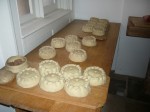 love what history can offer. As well as simply being interesting in its own right, history is a goldmine for anyone contemplating writing fantasy. Take any period in history, change a few names, sprinkle in some magic and suddenly you have an outline for a massive fantasy trilogy. At least.
love what history can offer. As well as simply being interesting in its own right, history is a goldmine for anyone contemplating writing fantasy. Take any period in history, change a few names, sprinkle in some magic and suddenly you have an outline for a massive fantasy trilogy. At least.
While that might be tongue in cheek, learning about history is a superb way to generate ideas for writing. Not just the great people and great events – although that sort of thing is valuable – but intimate details of social history, how people lived and worked and played.
This leads to one of the central paradoxes of writing fantasy. Yes, it's all made up and imaginary and strange – but it works best when it's realistic. The aim of the writer of fantasy is to make the exotic into something believable – or plausible, at least.
One key way to do that is to include details of the way people live in your fantasy world, and this is where history helps. If I'm writing in a high fantasy mode, then learning about food preparation in the middle ages gives me plenty of useful details to incorporate into my narrative. Or I might research clothing, or architecture, or medicine from the period. These details all come from an integrated past and bringing them into my fantasy world adds a depth and richness that is precious.
It works in other periods, too. In one 'Laws of Magic' scene I was working on, I had a character creeping into a house via a laundry. I had to stop and wonder about what one would find in a laundry in 1910. Coppers? Scrubbing boards? Soap? If so, what sort? Washing machines?
Let me assure you, there no area of history too trivial or too obscure for someone not to have a web page devoted to it. Ah, the wonders of the internet!
November 23, 2011
Writers Write: My Favourite Book 4
Today's Guest Post has Hazel Edwards remembering a particular, and mysterious, form of narrative transport. Hazel is one of Australia's best-loved writers. She thrives on writing for all ages and has published over 200 books across a range of subjects and genres.

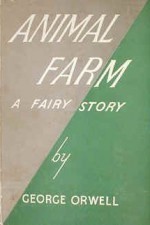
Aged 14, I lived in a country general store, and caught the school bus into the high school. For a readaholic, that was 45 minutes reading either way.
I loved mysteries or espionage (spies) because the stories had a twist. But I also liked biographies about writers, because I wanted to be an author, and I didn't know any. I wanted to know how they could fit in adventures, travel , work ,family and friends and still have time to write. So I read about French writers like Simone de Beauvoir, Albert Camus and others whose names I wasn't sure how to pronounce. I appreciated English writer Virginia Woolf's need for a room of one's own and an income if you wanted to write. I read about Australian writer Ruth Park (not knowing that in the future, her twin daughters would illustrate my picture books. Deborah Niland illustrated 'There's a Hippopotamus on Our Roof Eating Cake' and Kilmeny Niland illustrated my picture book 'Feymouse'). I also liked reading Chinese history about the female ruler whose name I couldn't pronounce either. That was often a problem from my reading, I'd mispronounce names because I'd only seen the words and never heard them spoken.
Then I read about Antarctic explorers. And decided I wanted to be an adventurous writer who would have an excuse for travelling to interesting places, because writing about them was considered work. Later I went on an Antarctic expedition and trekked in Nepal and went outback. A few years ago, I wrote 'Outback Ferals' which is set in Darwin in the Northern Territory with choppers and crocodiles, so sometimes your early reading influences you in ways you can't predict.
A very different book was George Orwell's 'Animal Farm' which was the first political satire I'd read. The animals acted like people. Orwell researched by 'doing' and having new experiences, in order to write realistically, and that really appealed to me.
I'm often asked my favourite book but my honest answer is usually the one I'm reading at the time. Because if you are inside the head of the author for the length of that book, or the length of the school bus ride, you are transported into another world.
Hazel's most recent books are the junior mystery, easy reading series 'Project Spy Kids' and 'Frequent Flyer Twins' illustrated by Jane Connory, are downloadable e-books, http://www.hazeledwards.com/shop/category/literacy-mysteries and even have stickers and merchandise. For more information, visit Hazel's website.
November 21, 2011
Ten Tips for Book Trailer Makers
I made my first Book Trailer back in 2007, when the whole Book Trailer thing was really starting to take off. Since then, I've seen million dollar Book Trailers and I've seen Book Trailers done on a shoestring budget.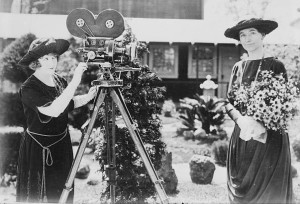 Sometimes, it's been hard to tell the difference – in good ways and bad ways.
Sometimes, it's been hard to tell the difference – in good ways and bad ways.
The challenge is always the same. A minute and a half (maybe more, maybe less) to entrance viewers, to captivate and fascinate them, to make them think that the book that is featured is the best thing ever and they simply have to go out and read it.
All in ninety seconds.
I've put together a few ideas for those attempting to put together a Book Trailer. I'm aiming these tips mostly at young people in schools, but the general principles are the same for everyone.
Watch some Movie Trailers. Book Trailers began when someone looked at awesome Movie Trailers and said, 'Hang on a minute …'. The general principles of Movie Trailers are applicable to Book Trailers. Watch how Movie Trailers are paced. What do they start with? Where is the turn/change of tone? How is music used? Valuable lessons here.
Software really doesn't matter. You can produce great Book Trailers with PowerPoint or MovieMaker or iMovie, or you can use full-on video editing software like Adobe Premiere. Sure, top end software gives you more fancy effects, but these can actually get in the way of a clear, effective Book Trailer. Don't just add a special zoomy/clicky/diffusing thing because you can – use it when it helps. In fact, special stuff is best used sparingly, if you have access to it.
Know your book, back to front. This is essential. If you're going to make an effective Book Trailer, you have to know what happened to whom, when and where. And you have to have a good feel for the book, in order to get the right look and sound for your trailer. It's no good reading the back cover, thinking the book is a murder mystery and it's actually a light-hearted romance.
Decide on your approach. Are you going to use some or all of film sequences, still images, text, voiceover and music?
NO SPOILERS!
Don't overcrowd your Book Trailer. Keep text to a minimum. Hit the highpoints. Be selective. Make people want to rush out and read the book because you've shown them some good stuff – and there must be more in the whole book!
Make sure you end with the name of the book and the author. You don't want to have a bewitching, fascinating trailer and leave people scratching their head and saying, 'I liked it, but what the heck was the name of the book?'
Don't try to retell the entire story. You only have a minute or so. Introduce characters, setting and give some idea of what happens (love, murder, kidnap, alien invasion).
Don't be boring. Grab attention at the start and don't let go. Make your audience gasp, laugh, cry, recoil in horror, SOMETHING!
If you're aiming to make your Book Trailer public, then get to know your copyright laws. For instance, it can be dicey to take your favourite song and use it on your Book Trailer ('Because it's just so perfect!'). Likewise with images you don't own.
Book Trailers are tiny, complete examples of storytelling, with their own language, rules and appeal. Having to work within the small time available is demanding, but sometimes a challenge produces brilliance. After all, you need great heat and pressure to make diamonds!

